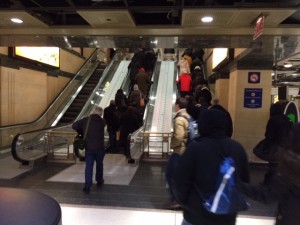Reposted from Trains Magazine: Officials at Metra say it’s time to tackle a topic that many in the rail industry have long considered taboo: death by train.
The commuter rail agency, in partnership with Amtrak and the DuPage Railroad Safety Council, sponsored a daylong symposium entitled “Breaking the Silence.” The Sept. 27 session at Union Station was intended to coordinate a strategy to prevent suicides along the tracks.
The agency gathered nearly 100 mental health experts and community members to help in its campaign to install suicide prevention signs along its 11 lines by the end of the year.
Metra Board Chairman Norman Carlson said the agency wanted to develop a collaborative regional strategy to address the problem.
The primary goal “is saving human lives,” Carlson said. “That is our principal objective.”
The event coincided with Rail Safety Week. September was also National Suicide Prevention Awareness month.
Metra announced the campaign in July after a spate of suicides in the Chicago area. So far this year, Metra said it has tallied 21 suicides or suspected suicides, more than in each of the previous five years.
The problem of suicide by train is particularly acute in the Chicago area, experts say, because the city is the nation’s railroad hub, served by six Class I railroads and Amtrak. Metra itself runs more than 700 trains a day.
The agency said it has so far trained more than 700 engineers, conductors and other employees to recognize individuals in despair and to intervene.
Although this program has been successful, Carlson said the agency needed to do more to “break the silence”…


